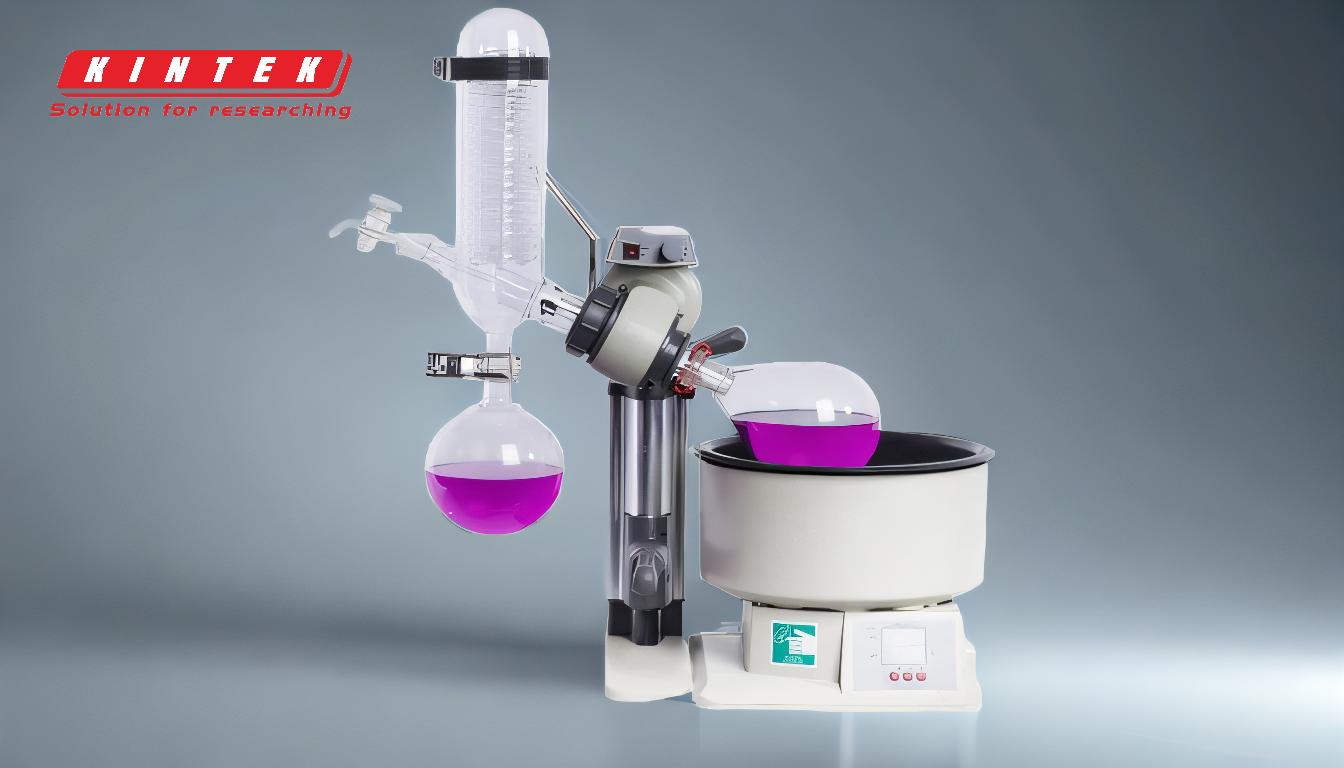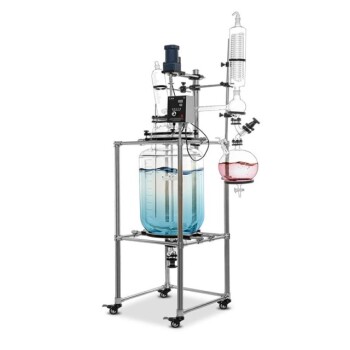Rotary evaporation, while a common and essential technique in laboratories, carries several risks that must be carefully managed to ensure safety. The primary hazards include implosions due to flawed glassware, explosions from concentrating unstable impurities or drying reactive compounds, and mechanical injuries from entanglement with rotating parts. Proper safety precautions, such as inspecting glassware, avoiding incompatible chemical mixtures, and securing loose clothing, are critical to mitigating these risks. Additionally, monitoring temperature and pressure, as well as ensuring proper ventilation, are essential steps to prevent accidents. Below, the key risks and safety measures are explained in detail.
Key Points Explained:

-
Implosions from Flawed Glassware
- Cause: Implosions can occur when the glassware used in rotary evaporation is flawed, such as having star-cracks or other structural weaknesses. Under vacuum conditions, these flaws can cause the glass to collapse inward suddenly.
- Risk: Implosions can result in flying glass shards, which pose a significant risk of injury to the user and damage to the surrounding equipment.
-
Prevention:
- Inspect all glassware for cracks, scratches, or other defects before use.
- Avoid using glassware with visible flaws, even if they appear minor.
- Ensure that glassware is rated for vacuum conditions.
-
Explosions from Concentrating Unstable Impurities
- Cause: Explosions can occur when unstable impurities or reactive compounds are concentrated during evaporation. Examples include peroxides in ethereal solutions, organic azides, acetylides, nitro-containing compounds, and molecules with strain energy.
- Risk: These compounds can become highly reactive under vacuum or heat, leading to violent explosions that can cause severe injuries and damage.
-
Prevention:
- Avoid concentrating unstable impurities or reactive compounds.
- Test solvents for the presence of peroxides or other reactive impurities before use.
- Use a bump trap to prevent contamination and reduce the risk of concentrating unstable materials.
-
Explosions from Drying Unstable Compounds
- Cause: Drying unstable compounds, such as organic azides, acetylides, nitro-containing compounds, or molecules with strain energy, can lead to explosions. These compounds may decompose violently when taken to dryness under vacuum.
- Risk: The sudden release of energy can cause explosions, resulting in injuries and equipment damage.
-
Prevention:
- Avoid taking unstable compounds to dryness.
- Use alternative methods for drying or concentrating such compounds, if possible.
- Ensure proper ventilation and use appropriate safety shields when working with reactive materials.
-
Mechanical Hazards from Rotating Parts
- Cause: The rotating parts of the rotary evaporator, such as the flask and motor, can entangle loose clothing, hair, or jewelry, leading to injuries.
- Risk: Entanglement can cause burns, cuts, or other injuries, and may also damage the equipment.
-
Prevention:
- Secure loose clothing, tie back long hair, and remove jewelry before operating the rotary evaporator.
- Ensure that the flask and bump trap are securely fastened with clips to prevent accidental detachment.
- Avoid direct contact with rotating parts during operation.
-
Temperature and Pressure Risks
- Cause: Improper control of temperature and pressure during rotary evaporation can lead to overheating, boiling over, or sudden pressure changes.
- Risk: Overheating can cause the solvent to boil over, leading to contamination or spills. Sudden pressure changes can result in implosions or explosions.
-
Prevention:
- Monitor the water bath temperature to ensure it does not exceed the boiling point of the solvent.
- Use a vacuum controller to maintain consistent pressure levels.
- Ensure proper ventilation to avoid the buildup of vapors.
-
Chemical Compatibility and Mixing Risks
- Cause: Mixing incompatible chemicals in the solvent collection flask can lead to violent reactions, fires, or explosions.
- Risk: Incompatible chemicals can react unpredictably, posing a danger to the user and the laboratory environment.
-
Prevention:
- Empty the solvent collection flask before use to prevent mixing incompatible chemicals.
- Label and segregate solvents to avoid accidental mixing.
- Consult chemical compatibility charts before combining materials.
-
General Safety Precautions
- Cause: Failure to follow general safety procedures can increase the likelihood of accidents.
- Risk: Neglecting safety protocols can result in injuries, equipment damage, or hazardous chemical exposures.
-
Prevention:
- Always wear appropriate personal protective equipment (PPE), such as gloves, lab coats, and safety goggles.
- Train all users on the proper operation and safety protocols for rotary evaporators.
- Regularly inspect and maintain equipment to ensure it is in good working condition.
By understanding these risks and implementing the recommended safety measures, users can minimize the hazards associated with rotary evaporation and ensure a safe laboratory environment.
Summary Table:
| Risk | Cause | Prevention |
|---|---|---|
| Implosions from Flawed Glassware | Flawed glassware under vacuum conditions | Inspect glassware, avoid defects, use vacuum-rated equipment |
| Explosions from Unstable Impurities | Concentrating unstable compounds like peroxides or azides | Test solvents, use bump traps, avoid concentrating reactive materials |
| Explosions from Drying Compounds | Drying unstable compounds like organic azides or nitro-containing compounds | Avoid drying reactive compounds, use alternative methods, ensure ventilation |
| Mechanical Hazards | Entanglement with rotating parts | Secure clothing, tie back hair, avoid loose items, use clips for flasks |
| Temperature and Pressure Risks | Overheating or sudden pressure changes | Monitor temperature, use vacuum controllers, ensure proper ventilation |
| Chemical Mixing Risks | Mixing incompatible chemicals | Empty collection flasks, label solvents, consult compatibility charts |
| General Safety Precautions | Neglecting safety protocols | Wear PPE, train users, inspect and maintain equipment regularly |
Ensure your lab's safety with expert rotary evaporation solutions—contact us today!

















